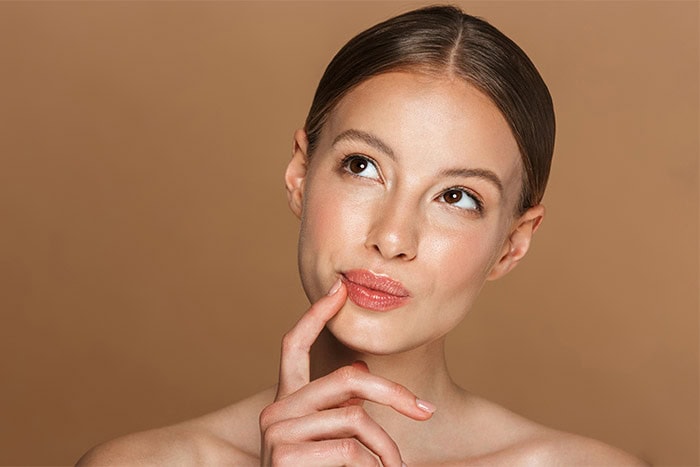The Safety of Botox After Years of Treatment
Yes, Botox is considered safe for long-term use when administered by an experienced medical professional. Decades of research support its use in both cosmetic and medical settings. Millions of people worldwide have safely received Botox for wrinkles, migraines, excessive sweating, jaw clenching, and more.
Botox has now been used for over 30 years in hospitals and clinics, giving it one of the strongest safety profiles of any aesthetic treatment. While its effects are temporary, many patients choose to have repeat treatments for years, and studies consistently show it remains safe when performed properly.
That said, in my cosmetic skin clinic in Wimbledon patients from Raynes Park, Kingston, Surbiton, Richmond, and across South West London often ask me about possible side effects if they use Botox for many years. Let’s explore what happens after 10 or even 20 years of Botox, what myths you might have heard, and how to ensure the safest, most natural results.
What Happens After 10 or 20 Years of Botox?
Long-term Botox does not damage your face. If used correctly, Botox simply prevents certain wrinkles from becoming deeper by relaxing targeted muscles. Over the course of 10 or 20 years, this often means that your skin looks smoother and younger compared to if you had never used Botox at all.
Some patients even find that their lines stay softer after stopping, because the muscles have been “trained” to be less active over time. The overall effect is usually a more refreshed look for your age, rather than any negative change.
You’re never locked into treatment – you can space appointments out or stop altogether if your needs change. I explain what happens if you stop Botox and how your skin adapts in a separate article.
Does Botox Age You in the Long Run?
No, Botox does not make you look older in the long run. Once it wears off, your face simply returns to its natural state, without any sudden deterioration. In fact, years of reduced muscle activity may mean fewer deep-set wrinkles because your skin has been under less constant folding.
The myth that Botox accelerates ageing usually comes from people who stop suddenly and notice their natural wrinkles again. That can feel like a dramatic change — but it’s just the normal ageing process resuming, not damage caused by Botox. With professional care, Botox supports a fresher, natural appearance over time.
UV damage from sunbeds is one of the biggest drivers of premature ageing, so if you tan regularly it’s worth reading my guide on sunbeds and Botox – including how long to wait after treatment.

Botox does not age you — in fact, long-term use can help slow the deepening of lines and wrinkles.
Is Botox Bad for You Over Time?
No, Botox is not harmful when used in approved doses. Cosmetic Botox uses much smaller amounts than the higher doses given for medical conditions like migraines or muscle spasms — and those have been used safely for decades.
Understanding exactly how the medicine works on the muscles and nerves can make long-term use feel less worrying – I explain this in more depth in my article on the science behind anti-wrinkle injections.
Most side effects, such as bruising or mild headaches, are short-lived and disappear within days. Serious long-term complications are extremely rare. In fact, for many patients, the only long-term effect is looking younger and more refreshed than they otherwise would.
For mothers, here’s a dedicated guide: Botox and Breastfeeding — Is It Safe?
Possible Long-Term Side Effects
Botox anti-wrinkle injections are a popular way to soften lines and wrinkles with minimal downtime, but many people understandably want to know what happens if they continue treatment over the long term. Most long-term Botox users experience no problems at all. Short-term side effects, such as bruising or occasional headache, are usually mild and temporary, but they’re still important to understand. You can read more in my article on Botox and headaches.
Repeated treatments may have some effects, particularly if very high doses are used or injections are poorly placed.
- Muscle Atrophy: Prolonged relaxation of certain muscles can lead to mild thinning. This is not dangerous and usually reverses if you stop treatment.
- Changes in Expression: Overuse or bad technique may create a “frozen” look, which is why subtle, balanced dosing is essential.
- Reduced Muscle Function: In rare cases, muscles treated heavily for many years may remain slightly weaker.
The good news is that these risks are avoidable. Choosing an experienced injector who prioritises natural results makes long-term Botox both safe and effective.
Can Botox Cause Cancer or Neurological Side Effects?
There is no evidence that Botox causes cancer or chronic neurological disease. The protein works locally, binding only to nerve endings in the treated muscles. It does not travel through your body or affect your brain.
Over time, Botox is broken down and eliminated naturally. This is why repeated treatments are needed to maintain results, and why it has such a strong safety record across both cosmetic and medical uses. Scientific studies consistently confirm that Botox does not build up in the body.

Patients sometimes worry about side effects, but Botox is considered very safe when performed by an experienced professional.
At What Age Should You Stop Using Botox?
There is no fixed age to stop Botox. Many people continue safely into their 60s or even 70s, while others decide to pause or stop earlier. The decision depends on your skin, health, and how you feel about your appearance.
Some people prefer to combine Botox with other treatments, such as Profhilo vs Profhilo Structura, for overall skin quality. What matters most is tailoring a plan that suits your goals at each stage of life.
What Are the Worst Side Effects of Botox?
The most common side effects are mild: small bruises, redness, or a short headache. In rare cases, if Botox is placed incorrectly, it can cause temporary drooping of the eyelid or eyebrow or affect smile sy
These effects are not permanent and always fade as the Botox wears off. This is why choosing a qualified, experienced practitioner is so important — careful technique is the key to avoiding problems and achieving natural results.

Most Botox side effects are mild and temporary — such as slight redness, swelling, or bruising.
Additional Questions People Ask
Does Botox Ever Fully Leave Your System?
Yes, Botox always leaves your system completely. The body naturally breaks down and clears the protein within months. This is why repeat treatments are needed every 3–4 months to maintain results, and why there is no “build-up” of Botox in your system over years.
What Happens After Stopping Botox Long-Term?
If you stop Botox, your face does not get worse. Your muscles simply return to normal activity and wrinkles reappear gradually, just as they would have without treatment. Many patients still look slightly younger than they would have otherwise, because Botox prevented lines from deepening over the years.
Does Botox Cross the Blood-Brain Barrier?
No, Botox does not cross the blood-brain barrier. It stays at the injection site, affecting only the local nerve endings and muscles. Decades of research confirm that it does not affect the brain or central nervous system.
Can Botox Worsen Wrinkles Over Time?
No, Botox does not worsen wrinkles. Once it wears off, your face returns to its natural baseline. If anything, Botox helps wrinkles soften by preventing constant folding of the skin, which is why long-term users often appear more youthful compared to non-users.
Final Thoughts on Botox Safety Long-Term
Botox is one of the most studied and trusted cosmetic treatments in the world. Long-term use is considered safe, with millions of patients worldwide having received it for decades without harm. The key is choosing an experienced practitioner, following aftercare, and using it in a way that keeps results subtle and natural.
It’s also completely fine to take a break or stop altogether if your circumstances change – I explain what happens if you stop Botox and how your skin adapts in a separate article.
📍 If you’re considering Botox in Wimbledon, Raynes Park, Kingston, Surbiton, Putney, or anywhere in South West London, I’d be happy to guide you through your options — whether you’re starting Botox for the first time, taking a break, or returning after years away.
During your free consultation, we’ll discuss your skin concerns, assess your facial structure, and decide together which treatment aligns best with your needs.
Book your free consultation here →
Or call me directly: 07702 389 636
Warm regards,
Dr Suresh Mohan
Contact Dr Suresh Mohan
Considering Book FREE consultation! My clinic is dedicated to providing this advanced skin rejuvenation technique, ensuring top-notch care in the heart of London.
If you have a specific question, want to book a free consultation or request a call back, please fill in the form below, and I will get back to you as soon as possible.
By clicking ‘Send enquiry‘ you agree to Dr Mohan Clinic’s Privacy Notice.







